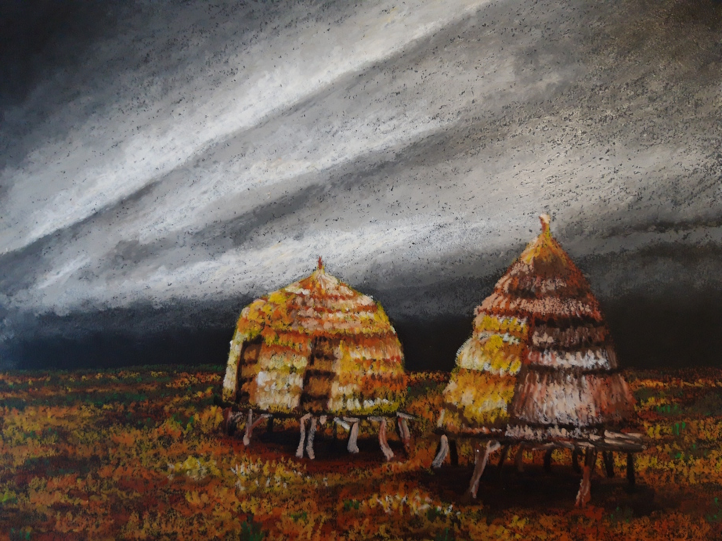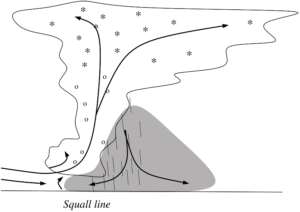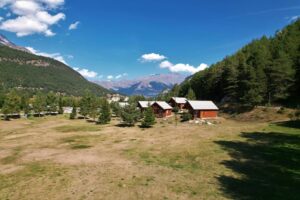Squall line
A storm that arranges in a line that can reach hundreds of kilometres.

Squall line above the Sahel, oil pastel by Camille Risi from a photograph by Thierry Lebel, 2022
Specific features
Discretion is not the highest quality of a squall line. In altitude, it forms an immense wall of smooth clouds composed of ice crystal: the front anvil. Underneath, a cottony wall of clouds: the arcus, sometimes accompanied by a monstruous dust cloud carried by wind gusts. The squall line moves fast, between 20 to 50 kilometres per hour, and separates in two parts. First, the convective part with storm cells, where the strong rainfall occurs and lasts about fifteen minutes. Then the stratiform part, that spreads out horizontally up to several hundred kilometres, where lighter rainfall occurs and can lasts several hours.
Origin
 A squall line appears when the winds at the surface and in altitude move at different speed. The wind carries the cold pools (see cold pools) away from the storm cells that created them. The updrafts can thus keep on being alimented in warm and moist air for hours, leaving the squall line plenty of time to grow. New updrafts form in front of the cold pool, lifted by gusts of wind. This continuing regeneration process allows squall lines to reach several hundred kilometres long, live up to more than 24 hours and travel several thousand kilometres.
A squall line appears when the winds at the surface and in altitude move at different speed. The wind carries the cold pools (see cold pools) away from the storm cells that created them. The updrafts can thus keep on being alimented in warm and moist air for hours, leaving the squall line plenty of time to grow. New updrafts form in front of the cold pool, lifted by gusts of wind. This continuing regeneration process allows squall lines to reach several hundred kilometres long, live up to more than 24 hours and travel several thousand kilometres.
Evolution
The squall line moves with the winds. As a violent storm, it can lead to considerate damage through gusts of winds, floods or heavy rainfall. It dissipates when it reaches a place or a time where the air is not sufficiently warm and moist to rise, or when the winds are not enough to displace the cold pools away from the cloudy updrafts.
When to see it
Squall lines are typically observed in monsoon regions, with warm and moist winds at the surface, contrasting with winds of a different speed in altitude. For instance, in the tropics, in Amazonia or in West Africa, in North America in the summer. They are frequent in the Great Plains of the United States, where they can cause damage.






